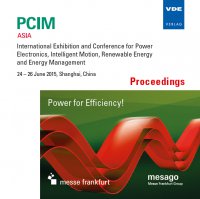Performance Comparison for A4WP Class-3 Wireless Power Compliance between eGaN® FET and MOSFET in a Class E Amplifier
Konferenz: PCIM Asia 2015 - International Exhibition and Conference for Power Electronics, Intelligent Motion, Renewable Energy and Energy Management
24.06.2015 - 26.06.2015 in Shanghai, China
Tagungsband: PCIM Asia 2015
Seiten: 8Sprache: EnglischTyp: PDF
Persönliche VDE-Mitglieder erhalten auf diesen Artikel 10% Rabatt
Autoren:
Rooij, Michael de (Efficient Power Conversion, 909 N. Sepulveda Blvd. ste230, El Segundo, CA, 90245, USA)
Inhalt:
eGaN FETs have previously demonstrated higher efficiency in wireless power transfer solutions when operating on-resonance using a class E amplifier [1, 2, 3, 4, and 5]. In this article we further examine how eGaN FETs continue to outperform MOSFETs in the class E amplifier when operated over a large reflected load impedance range. Large reflected impedances are part of the requirements for A4WP compliance [6] that address convenience-of-use for wireless power transfer solutions. The total imaginary component for A4WP Class-3 compliance is very wide and requires very high voltages at the extremes to yield the currents required. In this this evaluation, the amplifier’s maximum imaginary component variation will be determined experimentally which can subsequently be used to determine the number of adaptive matching retuning steps for compliance over the entire Class-3 A4WP range of +10jOmega through -150jOmega. The performance will further be compared to that of an equivalent MOSFET version of the amplifier. The results show that the eGaN FET based amplifier losses are lower by as much as 51% than the comparable best-in-class MOSFET amplifier.


